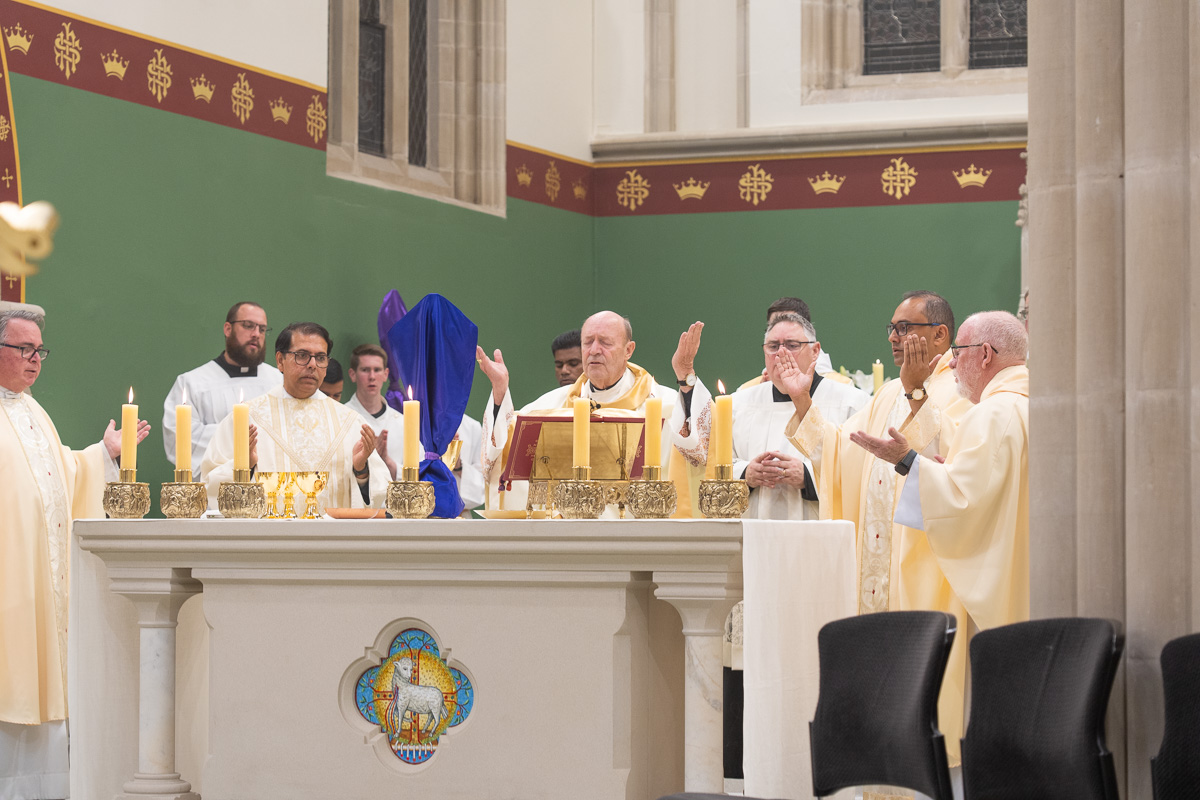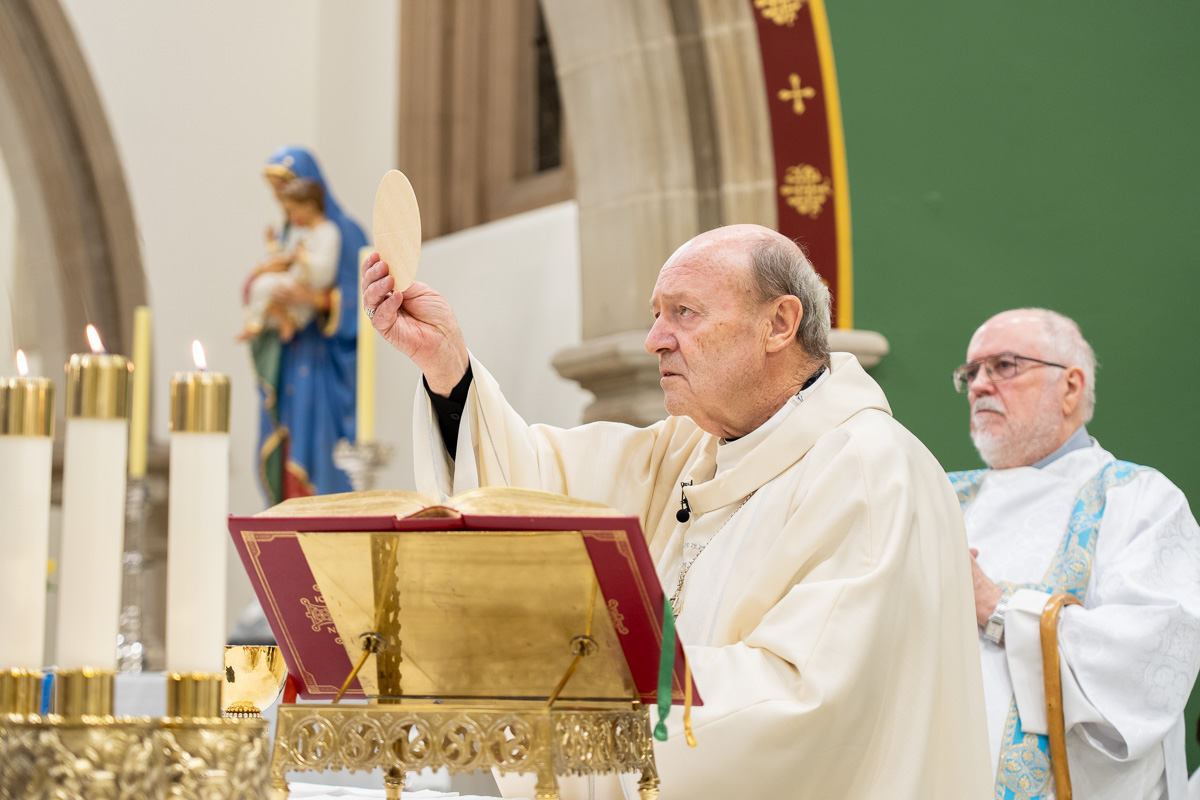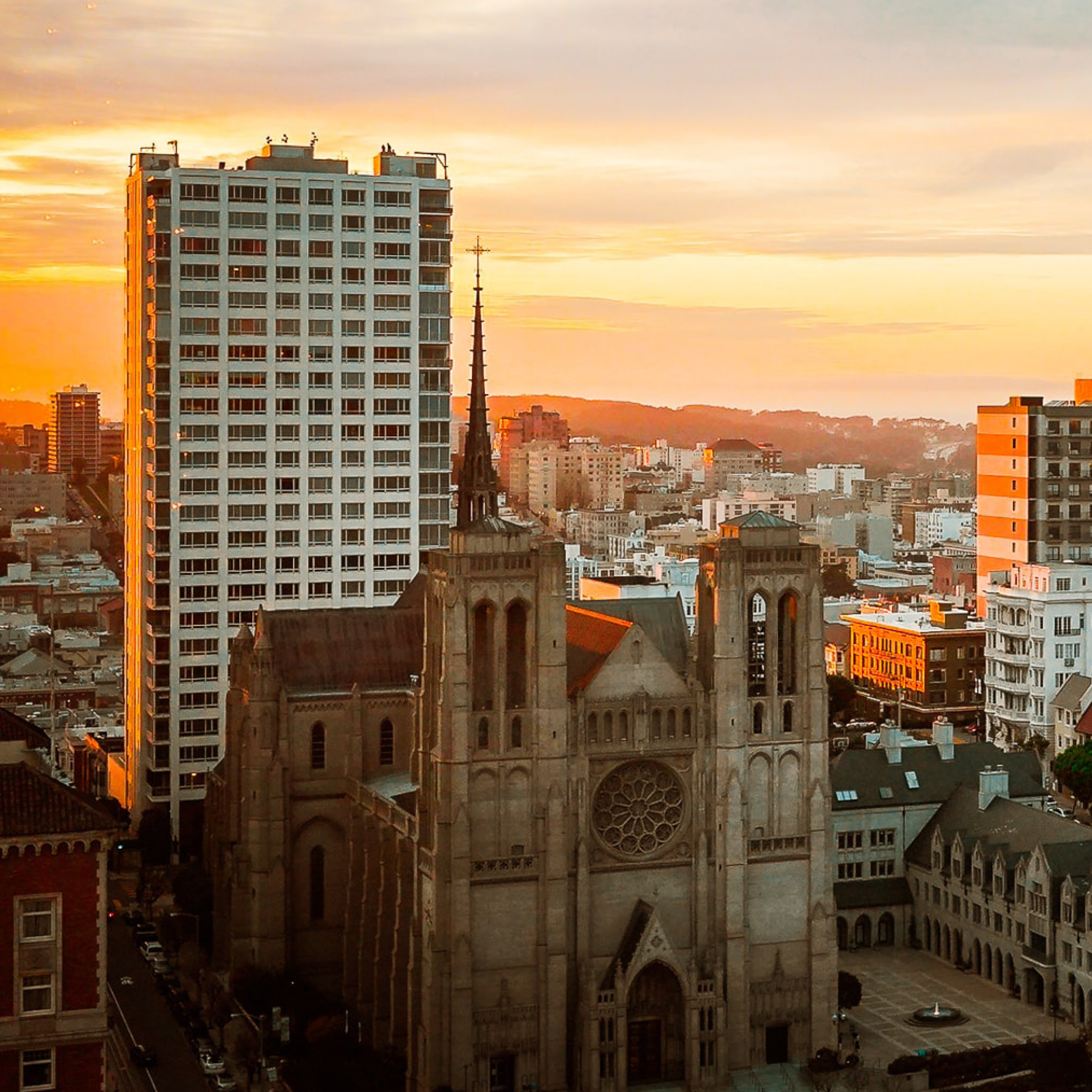The first duty of a believer is to offer worship to God. For Catholics this is expressed in the Sacred Liturgy of the Mass when we are invited to join with the angels and saints in their great hymn of worship: “Holy, holy, holy, Lord God of Hosts”. At the beginning of the Third Eucharist Prayer the priest prays, “You are indeed holy, O Lord, and all you have created rightly gives you praise”. At every Mass worship of God is central to its meaning and purpose.

Living, as we do, in a highly secular environment where the reality of God is smothered by the dazzle of human noise and activity, it can be true that only when a person comes to a church that they are taken into the world of the spiritual. However, even here the world outside can come in. We can want our liturgy to be more a celebration of our human experience. This is evident, for example, when at a funeral the family see it as a celebration of the life of their beloved departed one, rather than a prayerful commemoration of the soul of the departed into the hands of God.
Faith can easily lose its focus on the Divine and become some kind of celebration of an individual or human community detached from God.
Yet the tradition of the Sacred Liturgy that we have inherited is fundamentally about the praise and worship of the Divine.
We have been reminded of this by a recent work of Pope Francis (Desiderio Desideravi, 2022) where he addresses the need for a deeper formation of the People of God in order to understand the true nature of the Sacred Liturgy. The Pope reminded the Catholic faithful that the Liturgy, especially the Mass, is a moment of encounter with God.
He says, “In the Eucharist and in all the sacraments we are guaranteed the possibility of encountering the Lord Jesus and of having the power of his Paschal Mystery reach us.” (DD 11)
In a world which lacks opportunities to encounter the Divine, the Sacred Liturgy is a moment of encounter with the saving work of Christ. Firstly, the Liturgy is to be celebrated in a church, a building set aside for sacred use. A church is different from any other building. Its design, its focus on key elements like the altar and the ambo declares that this building has one central purpose – the worship of God. The presence of a tabernacle and the solitary red light burning day and night, declares that the Lord is present in this place. A church is the house of God.
Then the stained-glass windows, statues and sacred images help to remind us of the transcendent mysteries that take place during the celebration of the sacraments, in particular the Holy Sacrifice of the Mass. During the Mass we are brought into contact with Heaven. We are transported to a higher level of human experience, we move beyond what is simply material and can only be known through sensory perception. Here we enter the realm of the spiritual, the soul is stirred and opened to divine realities.
The celebration of the Liturgy itself is not just some enactment of purely human ritual, much less a commemoration of the spirit of the community. As St Pope Paul VI stated: “We believe that the Mass, celebrated by the priest representing the person of Christ by virtue of the power received through the Sacrament of Orders, and offered by him in the name of Christ and the members of his Mystical Body, is in true reality the Sacrifice of Calvary, rendered sacramentally present on our altars.”
The Sacred Liturgy is to be celebrated in such a way that it is clear that God, and not man, is being worshipped and glorified.
Thus, the music at Mass should honour the mystery of God and its beauty lift the soul to experience the world of the spirit. The lyrics should not commemorate us, but give glory to God.
The celebration of the Liturgy should be an expression of the beautiful. Pope Francis commented, “Beauty, just like truth, always engenders wonder, and when these are referred to the mystery of God, they lead to adoration.” (DD 25)

It is true: the expression of beauty in our churches and in the celebration of the Liturgy engenders a sense of wonder and this wonder draws us to adoration of God. Each celebration of the Liturgy should lead people to an encounter with the Divine.
This is the spiritual heritage of the Catholic Church. Whether it be in the architectural tradition which has given us the great medieval cathedrals, or the colour and light of stained glass, or masterpieces of musical composition, we are heirs to a tradition of faith that has sought to give glory to God and raise our spirits to contemplate the wonder of the Almighty.
Pope Francis makes an appeal to all of us in the Church when he says, “I would like this letter to help us rekindle our wonder at the beauty of the truth of the Christian celebration.” (DD 62)
In a similar way, Pope Benedict XVI was a great advocate of the importance of beauty in the celebration of the Liturgy as a means by which the soul is raised to worship of God. He writes,
“The beauty of the liturgy is part of this mystery; it is a sublime expression of God’s glory and, in a certain sense, a glimpse of heaven on earth. […] Beauty, then, is not mere decoration, but rather an essential element of the liturgical action, since it is an attribute of God himself and his revelation. These considerations should make us realize the care which is needed, if the liturgical action is to reflect its innate splendour.” (Sacramentum Caritatis, 35)
To express beauty in the Liturgy is not an exercise in aesthetics but an outward expression of an inner desire to offer worship to God.
Pope Francis comments, “The continual rediscovery of the beauty of the Liturgy is not the search for a ritual aesthetic which is content by only a careful exterior observance of a rite or is satisfied by a scrupulous observance of the rubrics.” (DD 25)
When the celebration of the Liturgy expresses its inner beauty then those who participate will sense something deep within their spirits. They will be drawn to an encounter with the Divine.
Pope Francis concluded his teaching on the Liturgy by quoting from his namesake, St Francis of Assisi, from an instruction offered to the friars. I quote the opening words,
“Let everyone be struck with fear, let the whole world tremble, and let the heavens exult when Christ, the Son of the living God, is present on the altar in the hands of a priest!”



Comments